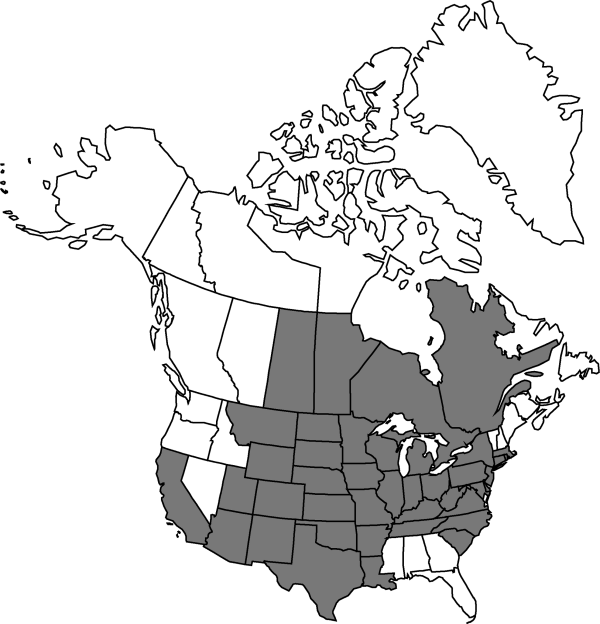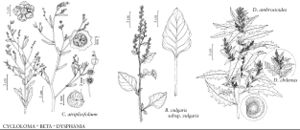Cycloloma atriplicifolium
Mem. Torrey Bot. Club 5: 143. 1894.
Stems 5–80 cm. Leaves: petiole ca. 2–15 mm or absent; blade 2–7(–8) × 0.5–2 cm, base cuneate, margin teeth acute or mucronulate. Perianths 2–4.5 mm diam. (including wing), ± tomentose, often becoming glabrous and reddish. Seeds 1.5 mm diam. 2n = 36.
Phenology: Flowering late summer–fall.
Habitat: Sandy soils, roadsides, waste places, disturbed and alluvial habitats, fields, deserts and prairies (obligate psammophyte)
Elevation: 0-1500 m
Distribution

Man., Ont., Que., Sask., Ariz., Ark., Calif., Colo., Conn., Ill., Ind., Iowa, Kans., Ky., La., Md., Mass., Mich., Minn., Mo., Mont., Nebr., N.J., N.Mex., N.Y., N.C., N.Dak., Ohio, Okla., Pa., S.C., S.Dak., Tenn., Tex., Utah, Va., W.Va., Wis., Wyo., n Mexico, introduced casual in Europe and some other parts of the world.
Discussion
The original distribution of Cycloloma atriplicifolium may have covered mostly central parts of North America west of the Mississippi River. Current distributions indicate a pattern of expansion. It appears to be spreading in southern Canada, especially the prairie provinces, and in the southeastern United States. Occurrences have been reported in Idaho, Maine, Nevada, New Hampshire, Vermont, Virginia, and West Virginia, but specimens have not been seen for these states.
Selected References
None.
